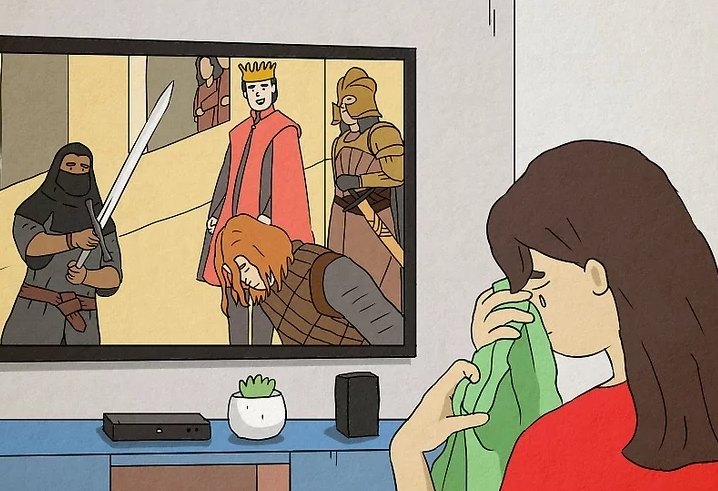
We analyze the audience response to the death of narrative-driven fictitious characters with predetermined fates, whether part of a virtual or cinematic story, and specifically from video games and TV series.
Our aim is to contribute to the studies of identification and empathy with fictitious characters in media, as well as to close the research gap around these studies by specifically focusing on the death of the characters.
We collected 3000 online comments on the deaths of 16 characters from video games and TV series. We coded each comment according to the five stages of grief by Kübler-Ross and Kessler and performed quantitative (using LIWC2015 psycholinguistic analysis software) and qualitative analysis (using thematic analysis).
Overall, we found a strong resemblance between the processes of grief for real and fictitious characters and uncovered differences in language when discussing the death of a character based on (a) their gender; (b) their role in the story; (c) their interactivity mode; and (d) the form of media. Finally, qualitative analysis revealed unique and novel themes for on-screen deaths, such as (a) the effects of aural cues; (b) nostalgia and beauty; (c) resurrection and transmedia; (d) spoilers; (e) comparisons and real-life connotations; (f) the effects on the franchise; and (g) the effects of the gender of the viewer on these discussions.
We discuss our findings in detail, along with implications for future character development.
Read the full research article –
Şengün, S., Santos, J. M., Salminen, J., Milenkovic, M., and Jansen, B. J. (2023). Is Death Only the Beginning? How People Mourn Artificial Characters in Social Media. Games and Culture, 0(0). https://doi.org/10.1177/15554120231190195
